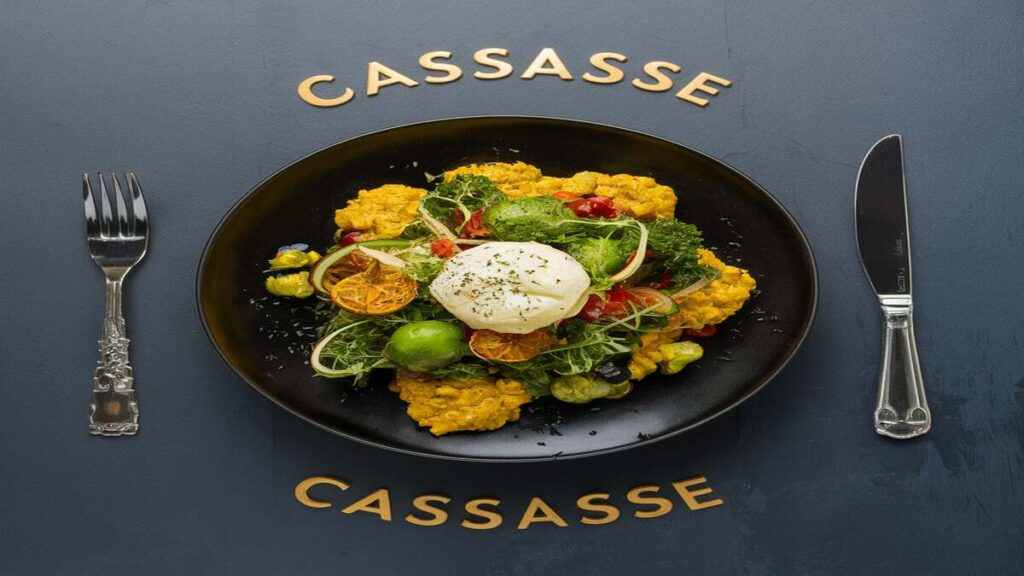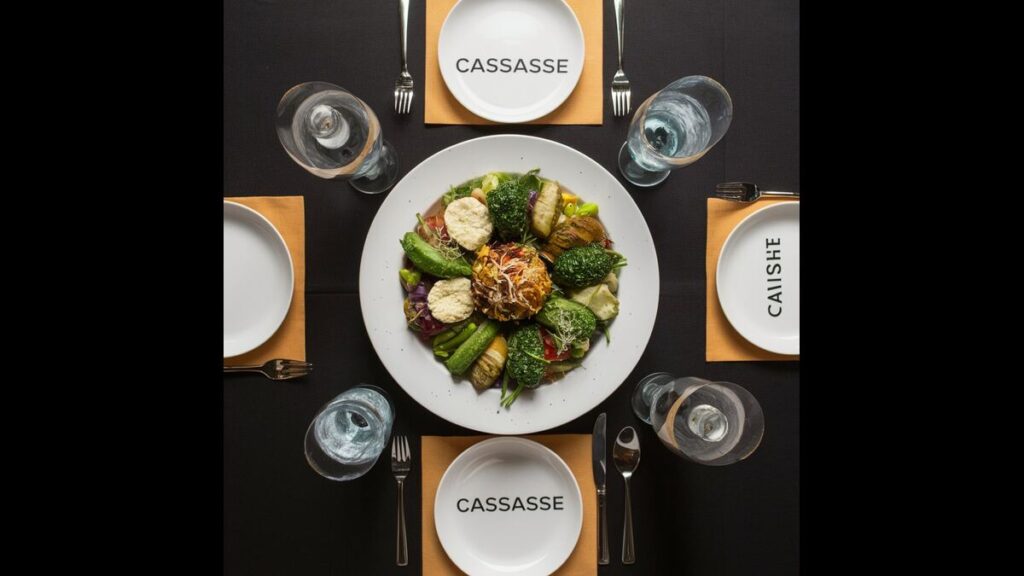Cassasse, a traditional dish with a rich cultural legacy, has been a staple in various regions, celebrated for its deep flavors and historical significance [1][4]. This dish, deeply rooted in ancient culinary practices, symbolizes significant cultural rituals and brings people together during festive occasions [3][4].
As we delve into the world of cassasse, we’ll explore its origins, key rituals, and the diverse ways it has influenced global culinary practices [1][2][3][4]. Our comprehensive guide will also provide dictionary links and tips for cooking cassasse at home, adapting traditional recipes to modern tastes while emphasizing sustainable practices [4].
The Origins of Cassasse
Exploring the rich tapestry of cassasse’s history reveals its multicultural roots and significant evolution. Originating as a staple in Caribbean cooking, cassasse is deeply embedded in the region’s cultural fabric. The dish’s lineage extends back to ancient civilizations, including Mesopotamia and medieval Europe, enriched by Arabian, Spanish, and Portuguese influences. This diverse heritage underscores cassasse’s role in traditional diets, where it was more than just sustenance but a symbol of community and identity.
- Geographical and Cultural Origins:
- Ancient Times: Cassasse’s journey begins in coastal communities where fishing and maritime trade were prevalent. These areas were pivotal in integrating local ingredients with traditional cooking methods to develop nourishing dishes.
- Cultural Integration: The root vegetable was embraced across Africa, the Caribbean, and South America, symbolizing adaptability and resilience. Its versatility in various culinary traditions highlights its ability to bridge cultures.
- Etymology and Surname Insights:
- Italian Influence: The surname ‘Cassasse’ likely stems from the Sicilian “cassisu,” meaning ‘chestnut’, possibly indicating a connection to chestnut groves.
- Global Presence: Over time, the surname has seen variations in popularity and distribution, influenced by migration and cultural shifts. Today, it is found predominantly in Italy, particularly in regions like Campania, Calabria, and Sicily.
This exploration into cassasse’s origins not only enriches our understanding of the dish but also connects us more deeply with the global tapestry of culinary history.

Key Rituals and Traditions
Cassasse is deeply woven into the fabric of Southern Italian coastal communities, particularly in Calabria and Sicily, where it transcends mere culinary delight to embody a rich tapestry of cultural significance. Celebrated in late spring or early summer, the Cassasse festival is a vibrant testament to the region’s heritage, marked by the following key rituals and traditions:
- Blessing of the Sea:
- A poignant ceremony led by local clergy and fishermen.
- Boats, adorned with colorful banners and flags, gather for a procession along the shoreline.
- Prayers for safety, prosperity, and abundance are offered, followed by the ceremonial casting of wreaths into the water, symbolizing reverence and respect for the sea.
- Community Feast:
- Post-ceremony, the community unites to indulge in a feast featuring traditional seafood dishes, freshly caught and prepared to celebrate the bounty of the sea.
- This communal dining experience fosters a spirit of togetherness, reinforcing social bonds and communal identity.
- Cultural Performances:
- The air resonates with music, dance, and theatrical performances that narrate age-old stories and legends, showcasing the rich cultural heritage of the region.
- These performances not only entertain but also serve as a medium for passing down traditions and folklore to younger generations, ensuring the preservation of cultural identity.
These festivities not only highlight the community’s connection to their marine environment but also attract tourists, adding a vital economic dimension to the traditional celebrations. The festival’s emphasis on environmental awareness further underscores the community’s commitment to sustainability, aiming to preserve the delicate balance of their marine ecosystems for future generations.
Ingredients of Cassasse
Exploring the foundational ingredients of Cassasse provides a fascinating insight into its rich culinary tradition. Here’s a detailed look at what goes into making this beloved dish:
Primary Ingredients
- Starchy Base: Cassava, known for its subtle sweetness and unique texture, serves as the primary starch.
- Proteins: Choices range from meats like beef, pork, and poultry to seafood in coastal areas, including clams, mussels, and shrimp. For vegetarian options, tofu or tempeh are excellent substitutes.
- Dairy: In some regional variations, cheeses like Parmigiano-Reggiano or Grana Padano enhance the flavor.
Tips for Cooking Cassasse at Home
Bringing the traditional flavors of Cassasse into your home kitchen can be a delightful journey into culinary exploration. Here’s how you can prepare this cherished dish, adapting it to suit modern tastes and dietary preferences:
Essential Ingredients and Preparations:
- Basic Ingredients: Start with cassava, coconut milk, garlic, onion, and a blend of herbs and seasonings.
- Cooking Method: Traditionally, cassava is simmered slowly with coconut milk, garlic, onion, and spices. This slow cooking process allows the flavors to meld beautifully.
- Modern Adaptations: Feel free to add meats or vegetables of your choice, experimenting with spices like cumin or coriander for a personalized touch.
Cooking Techniques and Variations:
- Slow Simmering: Essential for a tender, flavorful Cassasse, allowing all the ingredients to integrate their flavors.
- Vegan and Gluten-Free Options: Substitute chicken broth with vegetable broth and ensure all other ingredients adhere to dietary needs.
- Equipment Choices: Depending on your kitchen setup, use a slow cooker, pressure cooker, or a simple stovetop pot.
Serving and Storage:
- Accompaniments: Serve your Cassasse with rice, beans, or plantains. Garnish with fresh herbs like cilantro or a squeeze of lime to enhance the flavors.
- Storage Tips: Cassasse can be refrigerated for up to 3 days or frozen for 3 months. Always opt for fresh ingredients for the best taste and adjust seasonings as per your preference.
By incorporating these tips, you can master the art of cooking Cassasse, ensuring a delicious and aromatic dish that pays homage to its rich cultural roots while catering to contemporary palates.

Contemporary and Regional Variations
- Coconut Milk: Adds a creamy, tropical flavor, enriching the dish’s overall richness.
- Modern Twists: Incorporating fusion ingredients and innovative presentation techniques offers a modern take on classic recipes.
- Dietary Adaptations: Vegan and gluten-free versions are available, ensuring everyone can enjoy this dish regardless of dietary restrictions.
This array of ingredients not only contributes to the deliciousness of Cassasse but also reflects the cultural diversity and historical depth of its origins.
Seasonings and Cooking Techniques
- Aromatic Vegetables: Garlic and onions are essential for building the base flavors.
- Herbs and Spices: A blend of herbs alongside spices such as turmeric, cumin, and red pepper flakes add distinct flavors.
- Cooking Method: Traditionally, Cassasse is slow-cooked, allowing flavors to meld perfectly. Some recipes also suggest marinating the meat to deepen the taste.
Exploring the Global Influence of Cassasse
Cassasse’s global influence is as varied as it is profound, reflecting a rich tapestry of culinary evolution and regional adaptations. Here are some key aspects:
Evolution and Variations
- Culinary Trends: Over time, cassasse has absorbed various culinary trends, leading to an array of regional variations, each reflecting the unique flavors and ingredients of its locale.
- Traditional to Modern: The dish ranges from rustic, classic versions to modern adaptations, showcasing the flexibility and enduring popularity of cassasse across different cultures and tastes.
Ingredients and Health Benefits
- Nutritional Profile: Cassava, the primary ingredient, is a rich source of carbohydrates, fiber, vitamins, and minerals, providing essential nutrients and sustained energy. Coconut milk adds healthy fats and nutrients, supporting overall health.
- Symbolic Ingredients: Beyond their nutritional value, each ingredient in cassasse carries deeper meanings, from wealth to purity, adding a layer of cultural significance to the culinary experience.
Scientific and Cultural Research
- Ongoing Studies: The scientific exploration of cassasse includes analyzing its chemical composition and physical properties, with promising future prospects due to advancements in research methodologies.
- Cultural Insights: Each variation of cassasse not only offers a unique culinary experience but also reflects the creativity and cultural heritage of the communities that prepare it, contributing to a broader understanding of global culinary diversity.
Cultural Performances and Celebrations
Cassasse, deeply entrenched in local culture, symbolizes more than just a culinary delight; it represents a communal spirit and a celebration of life’s milestones. Our festival, typically held in late spring or early summer, aligns with the bountiful harvest and warmer weather, setting a perfect stage for communal joy and festivities.
- Festival Activities:
- Feasting on Seafood: Post-religious ceremonies, we gather for a grand feast. The menu features an array of traditional seafood dishes like grilled fish, seafood pasta, and fried calamari, all paired with local wines and desserts.
- Cultural Performances: The festival is vibrant with traditional music, dance, and theatrical performances that depict age-old stories and legends. These performances are crucial in keeping the oral traditions alive, passed down through generations.
- Community Engagement and Tourist Attraction:
- Local and Global Appeal: The festival not only strengthens local bonds but also attracts tourists from around the globe, eager to experience our unique blend of cultural festivities and coastal charm.
- Economic and Cultural Impact: This influx of visitors significantly boosts our local economy and helps in promoting and preserving our rich cultural heritage.
Throughout these celebrations, music, dance, and laughter permeate the air, reinforcing the spirit of togetherness and cultural pride among families and friends.
Significance and Legacy
Cassasse’s significance extends beyond its culinary uses, embodying a rich tapestry of cultural identity and heritage. As we delve deeper into its legacy, several aspects stand out:
- Cultural and Spiritual Significance:
- Symbol of Prosperity and Abundance: Historically, cassasse has been a symbol of prosperity and abundance, reflecting its importance in rituals and festivals.
- Sacred Status: Its use in religious ceremonies by indigenous communities underscores its sacred status, symbolizing fertility and life.
- Contemporary Relevance and Global Impact:
- Environmental Awareness: Recently, cassasse festivals have incorporated themes of conservation, emphasizing the importance of sustainable practices and marine ecosystem preservation.
- Art and Literature: Cassasse continues to inspire artists and writers globally, influencing works in literature, science, and spirituality.
- Economic and Social Contributions:
- Tourism and Local Economy: The influx of tourists during cassasse festivals provides vital economic support to local businesses and artisans.
- Community Connection: Preparing cassasse during special events fosters a strong sense of community and connection, reinforcing social bonds through shared cultural heritage.
These elements highlight the enduring legacy of cassasse, demonstrating its ongoing relevance and impact across various spheres of life.

Conclusion
Through the intricate layers of cassasse’s history, traditions, and cultural significance, we’ve traced its journey from ancient culinary staple to a modern-day symbol of communal identity and environmental consciousness. This exploration not only reaffirms cassasse’s place in the culinary world but also highlights its role as a beacon of cultural heritage, drawing together threads of history, gastronomy, and communal spirit. As we reflect on the rich tapestry of cassasse’s legacy, from its origins across global civilizations to its contemporary celebration in festivals, the dish stands as a testament to the enduring power of food in expressing and preserving our cultural identities.




